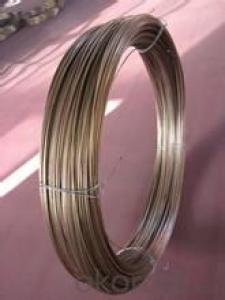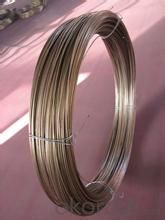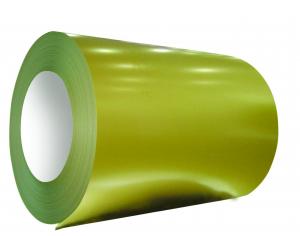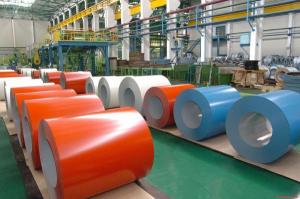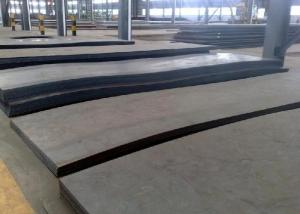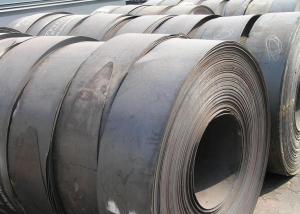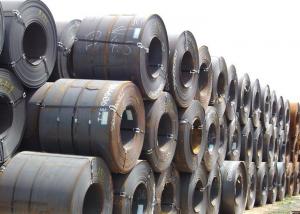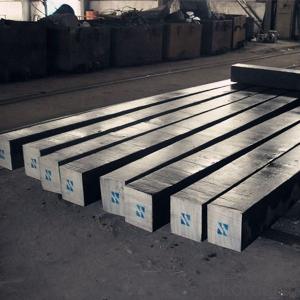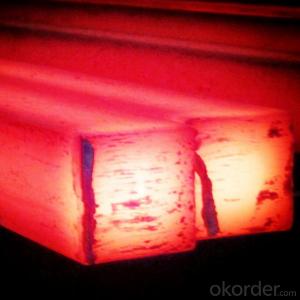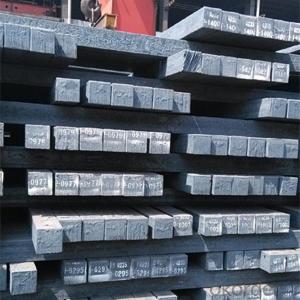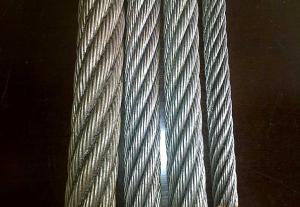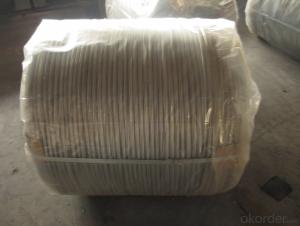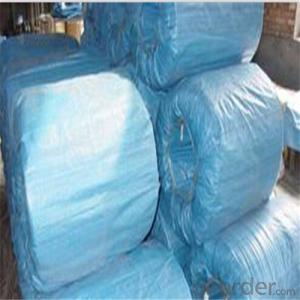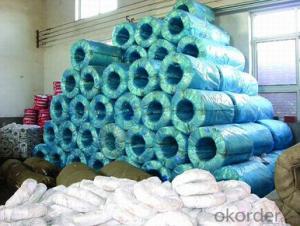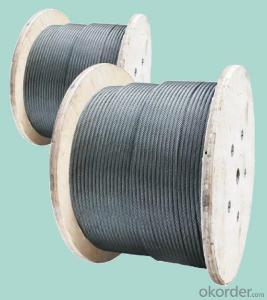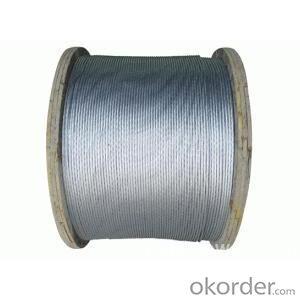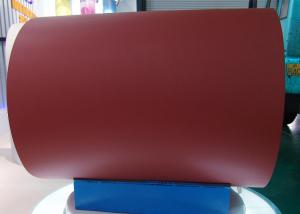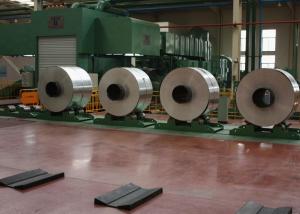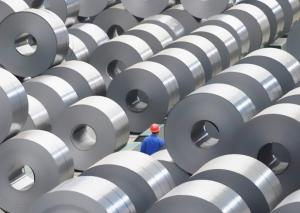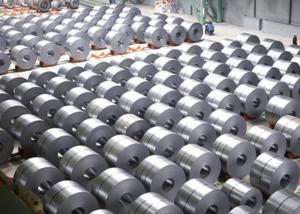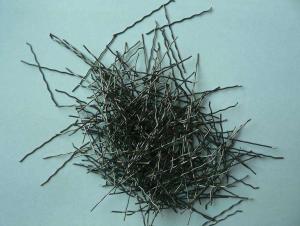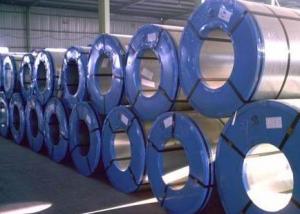Galvanized Steel Wire Rope For Sreel-Cored Twisting
- Loading Port:
- China Main Port
- Payment Terms:
- TT OR LC
- Min Order Qty:
- -
- Supply Capability:
- -
OKorder Service Pledge
Quality Product, Order Online Tracking, Timely Delivery
OKorder Financial Service
Credit Rating, Credit Services, Credit Purchasing
You Might Also Like
- Q: What are the different types of steel wires and their applications in the telecommunications industry?
- There are several types of steel wires used in the telecommunications industry. Some common ones include galvanized steel wires, aluminum clad steel wires, and stainless steel wires. Galvanized steel wires are coated with a layer of zinc, which provides corrosion resistance. They are commonly used for overhead transmission lines and communication cables. Aluminum clad steel wires are made by covering a steel core with a layer of aluminum. These wires combine the strength of steel with the light weight and conductivity of aluminum. They are often used in the construction of overhead power lines and telecommunication cables. Stainless steel wires are known for their high strength and resistance to corrosion. They are used in the telecommunications industry for applications that require durability and reliability, such as guy wires for cell towers and suspension cables for overhead lines. Overall, steel wires play a crucial role in telecommunication infrastructure, providing support, strength, and conductivity for various applications in the industry.
- Q: What are the uses of steel in the construction of schools and universities?
- Steel is widely used in the construction of schools and universities due to its superior strength and durability. It is commonly used in structural components like beams, columns, and frames, providing stability and support to the buildings. Additionally, steel is fire-resistant, making it a safe choice for educational facilities. Its versatility allows for flexible designs, accommodating various architectural styles and adapting to changing needs. Moreover, steel construction is efficient, reducing construction time and costs, while also being environmentally friendly as it is recyclable. Overall, steel plays a crucial role in ensuring the safety, longevity, and functionality of schools and universities.
- Q: How is steel used in the manufacturing of oil and gas pipelines?
- Steel is commonly used in the manufacturing of oil and gas pipelines due to its exceptional strength, durability, and resistance to corrosion. It is used to construct the main body of the pipeline, providing a reliable and safe transportation system for oil and gas resources. Additionally, steel can withstand high pressure and extreme temperatures, making it suitable for the demanding conditions often encountered in the oil and gas industry.
- Q: What are the different methods of testing the quality of steel products?
- There are several methods of testing the quality of steel products, including destructive and non-destructive testing methods. Destructive testing involves subjecting the steel to extreme conditions, such as tension, compression, or bending, to determine its mechanical properties and strength. Non-destructive testing methods include visual inspection, ultrasonic testing, magnetic particle testing, and radiographic testing, which allow for the detection of defects or irregularities in the steel without causing any damage. These testing methods help ensure that steel products meet the required quality standards and are fit for their intended applications.
- Q: What are the factors to consider when estimating the lifespan of steel structures?
- When estimating the lifespan of steel structures, several factors need to be considered. These factors include the quality of the steel used, the design and construction techniques employed, environmental conditions, maintenance practices, and the level of stress and load the structure will be subjected to. Additionally, factors such as corrosion, structural fatigue, and potential for damage due to natural disasters or accidents should also be taken into account. Proper consideration of these factors can help provide a more accurate estimation of the lifespan of steel structures.
- Q: How are steel pipes used in oil and gas pipelines?
- Steel pipes are used in oil and gas pipelines due to their strength, durability, and resistance to corrosion. They serve as the primary material for transporting oil and gas over long distances, ensuring a safe and efficient flow. These pipes are laid underground or underwater and are capable of withstanding high pressure and extreme temperatures, making them essential for the energy industry's infrastructure.
- Q: What are the common types of steel products used in the hospitality industry?
- The common types of steel products used in the hospitality industry include stainless steel cutlery, cookware, kitchen equipment such as sinks and countertops, food serving utensils, and furniture like tables and chairs.
- Q: What are the different types of steel plates and their applications?
- There are several different types of steel plates, each with its own unique properties and applications. Some common types include carbon steel plates, stainless steel plates, and alloy steel plates. Carbon steel plates are the most widely used and versatile type, suitable for various applications such as structural and construction projects, machinery parts, and general fabrication. Stainless steel plates are highly resistant to corrosion, making them ideal for applications in the food industry, chemical processing, and marine environments. They are also commonly used in the production of kitchen appliances and utensils. Alloy steel plates are made from a combination of different metals, providing enhanced strength, durability, and resistance to wear and tear. These plates are commonly used in industries such as aerospace, automotive, and oil and gas, where high strength and toughness are required. Overall, the choice of steel plate depends on the specific requirements of the application, such as strength, corrosion resistance, and environmental conditions.
- Q: What are the uses of steel in the construction of museums and art galleries?
- Steel is commonly used in the construction of museums and art galleries due to its strength, durability, and versatility. It provides structural support to large exhibition spaces, allowing for expansive open areas without the need for excessive columns or walls. Steel also enables the creation of unique architectural designs, such as curved or cantilevered structures, which can enhance the artistic appeal of these buildings. Additionally, steel's fire resistance properties make it a safe choice for protecting valuable artwork and artifacts, while its ability to withstand extreme weather conditions ensures the long-term preservation of these cultural spaces.
- Q: What are the different grades of steel?
- There are several different grades of steel, including mild steel, carbon steel, stainless steel, and alloy steel. Each grade varies in terms of its composition and properties, making them suitable for different applications.
Send your message to us
Galvanized Steel Wire Rope For Sreel-Cored Twisting
- Loading Port:
- China Main Port
- Payment Terms:
- TT OR LC
- Min Order Qty:
- -
- Supply Capability:
- -
OKorder Service Pledge
Quality Product, Order Online Tracking, Timely Delivery
OKorder Financial Service
Credit Rating, Credit Services, Credit Purchasing
Similar products
Hot products
Hot Searches
Related keywords
